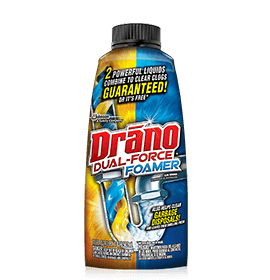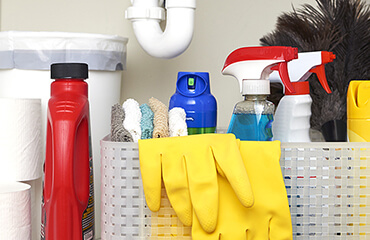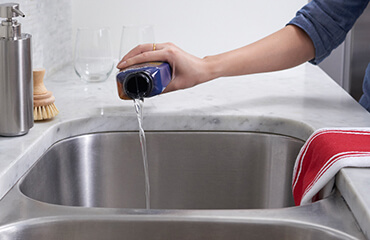Have You tried?
How to Fix a Dishwasher That Won't Drain: A guide to unclogging your dishwasher drain
A slow draining dishwasher is a pain when there’s a load of dirty dishes to wash. Keep reading for our top tips on how to unclog a dishwasher.

Why is there water at the bottom of my dishwasher?
If your dishwasher has standing water, is slow draining, or is not doing its job properly, there’s a good chance that there’s a clog to blame. Although a clog isn’t always the cause of a backed up dishwasher, it’s one of the most likely culprits.
A clogged dishwasher drain hose or filter can occur due to a buildup of food particles. You may notice that your dishes come out dirty when your dishwasher filter is clogged. This can be avoided by rinsing dishes before loading them and cleaning the dishwasher regularly.
Other causes of a slow draining dishwasher include:
- Lack of maintenance: Dishwashers need to be cleaned regularly in order to wash your dishes effectively. This includes cleaning the filter and the drain basket, as well as other parts, such as the spray arm. For a full guide on how to clean a dishwasher, see our blog post.
- Appliance faults: Sometimes dishwashers can malfunction due to improper use. It’s important to consult the instruction manual to learn how to operate your dishwasher and avoid problems. For example, some dishwashers will become clogged if you use dish soap as a substitute for a dishwasher detergent or tablet.
- Damaged parts: Over time, dishwasher parts may become worn out and broken. This often happens when a dishwasher is nearing the end of its life cycle (typically 9-16 years). When this occurs, parts should be replaced by a professional to ensure your warranty is validated.
How to unclog a dishwasher drain
There are several techniques for fixing a slow draining dishwasher. This video outlines methods for unclogging a dishwasher that you can try easily yourself.
Read a breakdown of how to fix a clogged dishwasher drain below:
1. Check the garbage disposal and the drain hose
If you have a garbage disposal and a built-in dishwasher, a clog in the garbage disposal drain may cause your dishwasher to drain slowly or perform poorly.
To fix a clog in the garbage disposal drain, turn on the garbage disposal and grind food or residue in the drain. Run water through the disposal to ensure it’s functioning smoothly. Sometimes this is enough to fix a backed up dishwasher.
You should also check if the dishwasher drain hose is clogged or if there’s any kinks in the tube. Ensure the drain hose is screwed in tightly to prevent leaks. If this doesn’t solve the problem, or if you suspect a deeper clog, you can also use Drano® Dual-Force Foamer Clog Remover in your garbage disposal drain to bust through tough blockages. Note, however, that Drano® products are not safe for use in dishwashers and should not be used in your appliance. Follow all product and safety instructions and view our guide to unclogging your garbage disposal for more advice.

2. Inspect the air gap
The air gap is a mechanism that prevents dirty water from re-entering your dishwasher. Not every dishwasher has an air gap, but it is typically found on the counter behind the sink. If the air gap is blocked in some way, it may be the cause of your slow draining dishwasher.
If you notice that water is flooding onto your countertop, it’s possible your air gap is clogged. Clean it by removing the cap and clearing out any buildup or debris. Ensure that the cap is screwed on tightly after cleaning.

3. Clean the dishwasher drain filter
A clogged dishwasher filter could also be causing draining issues. It’s important to clean this filter regularly as it can accumulate food debris over time.
The filter is usually found in the back of the dishwasher underneath the spray arm or in the bottom corner. If you are unsure, check the owner’s manual. Some dishwashers – especially newer models – have small grids that are built into the base. You may need to unscrew the casing to access the filter.
To clean a clogged dishwasher drain filter, wash it with soap and warm water to remove food particles and build-up. Wipe away any debris from underneath the filter using a damp sponge or cloth. Put the filter back in its place and you’re done!

4. Unclog your dishwasher with baking soda and vinegar
If your dishwasher is still slow to drain, using a DIY drain cleaning solution is another option.
Mix ½ cup baking soda with ½ cup white vinegar and pour it into the basket at the base of the dishwasher. Wait for 15 minutes, then rinse with boiling water. Run the dishwasher on a short, hot cycle to clear any remaining debris.

If you still have a clogged or slow draining dishwasher, it may require more than a DIY quick fix to solve. Don’t hesitate to call a professional if you suspect that there’s a more serious problem with your dishwasher.
Preventing a clogged dishwasher
To avoid dishwasher clogs in the future, follow these tips:
- Clean the dishwasher parts and filter regularly to prevent buildup. View our blog on How To Clean A Dishwasher for advice on keeping your dishwasher clean and functioning.
- Read the owner’s manual and follow any manufacturer’s maintenance instructions for your dishwasher model.
- Rinse dishes before loading them into the dishwasher.
- Occasionally run the dishwasher on an empty cycle to clear out food or debris.
- Use a baking soda and vinegar solution in the dishwasher drain periodically for additional cleaning.
If you need more advice for how to prevent and get rid of clogs in your kitchen, bathroom, and other household drains, see our helpful guides and blog posts on the Clog Basics page. Discover the full range of Drano® clog-busting products here.



